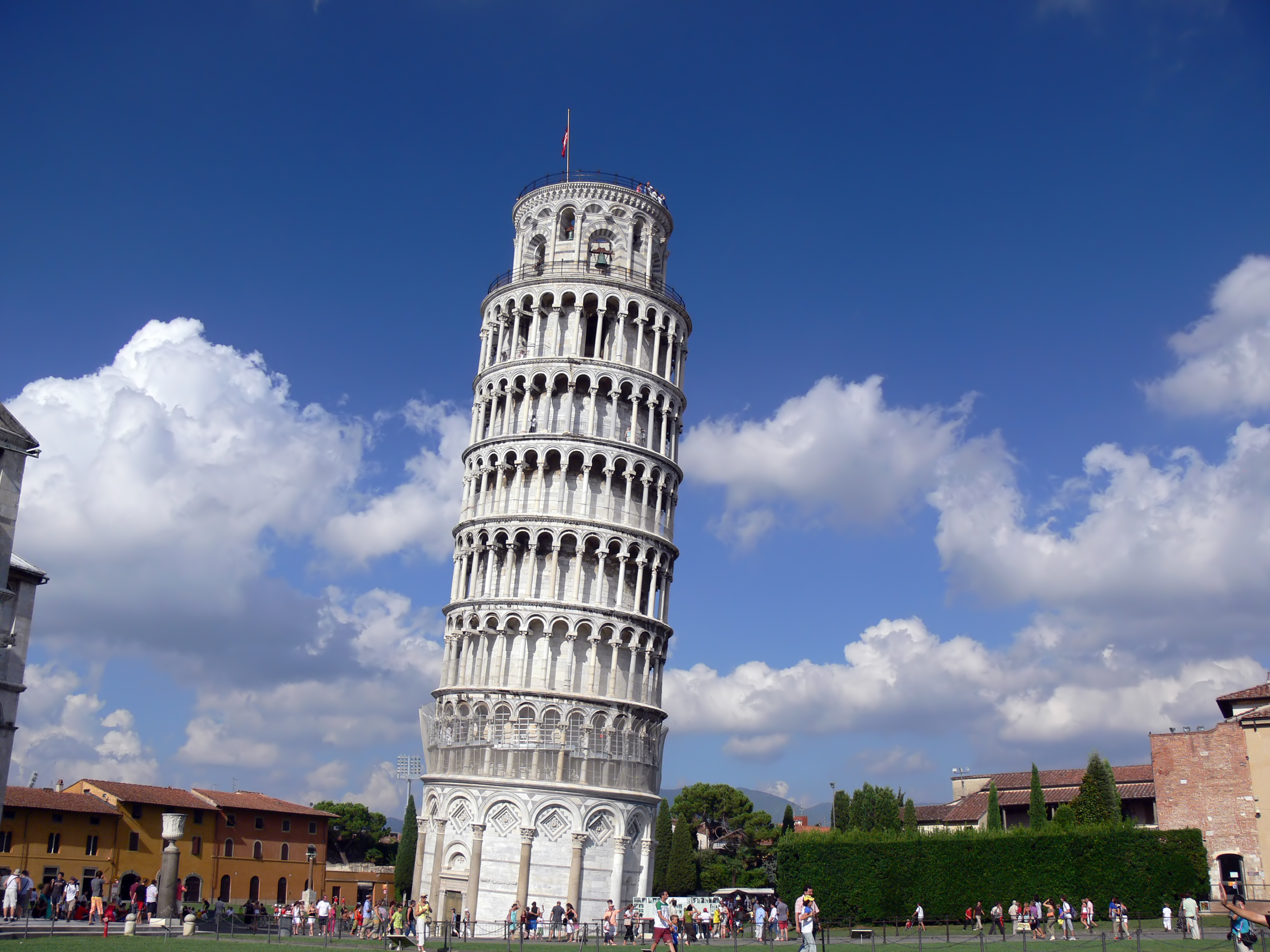One of Europe’s most remarkable buildings, the Leaning Tower of Pisa is an icon not just of a nation, but of an entire continent…
Along with the Eiffel Tower in Paris, Big Ben in London and the Brandenburg Gate in Berlin, this is one of Europe’s most readily recognisable buildings. You might include the Colosseum in Rome on that list, but if you had to represent Italy with one building only, that building would simply have to be the Leaning Tower of Pisa. Why? Because it leans…
You’d think that most people, having noticed that their tower had already developed a pronounced tilt before even the second floor was finished, for the plainly obvious reason that the foundations were on unstable ground, would have given the whole thing up as a bad job.
But that would be to underestimate the people of the Pisan Republic. They, instead, just left it to settle for 100 years, while they got on with fighting their neighbours, before returning to finish the job, having by then come up with the clever idea of making each subsequent floor slightly taller on the leaning side, to compensate for the tilt. (So it’s actually the Curving Tower of Pisa.)
Construction began in 1173, but they had only got as far as the second floor before it started to tilt. They left it ‘to settle’ and started again in 1272. The seventh floor was finished in 1319 and the bell-tower was added in 1372.
Remarkably, the seventh and final floor was laid a century-and-a-half after construction had begun, and the bell-chamber at the top was added a full half century after that… But what’s really remarkable about the Leaning Tower of Pisa is that it’s still there.

